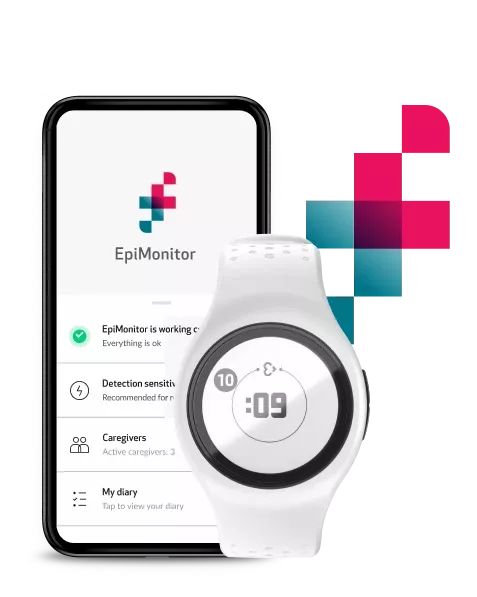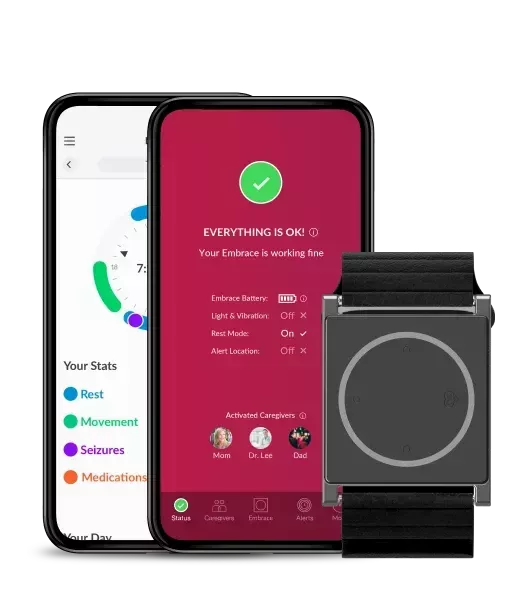Matthew Goodwin is using Empatica's tech to build predictive algorithms

This post was co-written with Dr. Matthew Goodwin, an Interdisciplinary Professor with over 25 years of experience in autism research.
Dr. Goodwin is a tenured professor at Northeastern University, where he is part of the Bouvé College of Health Sciences and the Khoury College of Computer Sciences. He is a founding member of the doctoral program in Personal Health Informatics and directs the Computational Behavioral Science Laboratory.
His previous roles include Visiting Associate Professor at Harvard Medical School, Adjunct Associate Professor at Brown University, and Director of Clinical Research at the MIT Media Lab. Dr. Goodwin has also served on the Executive Board of the International Society for Autism Research, the Scientific Advisory Board for Autism Speaks, and contributed to the creation of the Advanced Research Projects Agency for Health (ARPA-H).
If a person with autism engages in aggressive behavior, it is most likely that it will happen repeatedly. However, when the subsequent aggression will occur can be challenging to determine.
What if wearable technology can predict aggressive behavior before it happens, allowing preventative measures to be taken?
This is the question that Goodwin explored in his recent autism study using Empatica’s technology.
The importance of predicting behavior in children with profound autism
By the age of 8, 1 in 36 children are diagnosed with autism around the world, with a staggering 78 million living with autism. Of these 78 million, 30% meet the criteria for profound autism.
What is considered profound autism? The Child Mind Institute defines it as having an IQ of less than 50 or being minimally verbal or nonverbal. Children with profound autism generally require round-the-clock support, and many exhibit aggressive behavior.
When we asked Goodwin what families of children living with profound autism say impacts their quality of life most, he said: “Overwhelmingly, the number one thing they say that is most disruptive to their quality of living is severe temper tantrums, as these can lead to self-injury, aggression to other people, property destruction, and even running away.”
These children cannot express their feelings verbally, so their caregivers rely on observing behavioral triggers. Sometimes these can be impossible to spot, and their severe outbursts can lead to injuries to family members, carers, and even themselves.
This difficult situation is escalated further when aggressive outbursts occur in more dangerous settings. For example, if a parent is driving with their child on the freeway and their child is aggressive towards them, this can result in an accident.
As Goodwin states, “If you know the behavior is going to occur before it does, there's a whole host of things you can do. For example you can ensure you're in the same room and have your eyes on the child”.
Overcoming research challenges using wearable tech
Despite its prevalence, there is very little research involving children with profound autism. The setting for most research is university labs, requiring participants to come in for long periods and follow instructions. These settings are challenging for children with profound autism to comply with, as they generally struggle with the instructions given and the need to sit still for long durations.
When asked how he overcame this challenge, Goodwin said, “It had to be a wearable. A way of collecting data in natural environments passively and continuously without wires tethered to a machine in a specialized lab while seated and unmoving”.
This drove Goodwin to explore how wearable sensors outside of a lab setting can be used to predict aggressive episodes, which Goodwin says can be conceptualized as ‘fight or flight responses’: “The fight or flight response prepares the body to fight or flee and has a well-known physiological pattern including increased cardiovascular activity, respiration, and sweating. These are all things we can measure physiologically through sensing on the skin’s surface”.
Goodwin was interested in examining cardiovascular and electrodermal activity, which requires a rich sensor set to measure. He selected Empatica’s technology due to the durability of the wearable and the quality of the data provided by the platform:
“A lot of the wearables that we could buy off the shelf are not fit for purpose with this population because they're not durable, shockproof, waterproof, because I can't access the raw data, and because I don't have any independent validation that the measures are accurate [...] We have to access the raw data. I can't trust pre-processing methods if I can't validate them”.
Goodwin also emphasized the design: “It’s got to look cool. It’s got to be comfortable. It can’t be stigmatizing. It should be something that people are not ashamed to wear and are comfortable over long periods.”
Collecting data across dozens of inpatient settings
Goodwin’s study examined aggression to others, self-injury, meltdowns, and major tantrums in 70 minimally verbal children with profound autism across four different US hospitals in a psychiatric inpatient setting.
Each child wore an Empatica wearable on their wrist that recorded the biosensor data. Clinical staff were given a phone with a custom application time synchronized to the child’s Empatica device. The app allowed staff to log when the child displayed aggression to self or others or a major tantrum and when the episode ended.
With this, Goodwin monitored the rate, duration, and temporal patterning of observed aggressive behavior, which became the annotation dataset. This allowed him to start building machine learning models to predict when an aggressive behavior was about to occur.
Predicting behavior up to 3 minutes in advance
The results showed that the machine learning classifiers could use the biosensing data to correctly predict when a behavioral event would occur before it happened at a very high rate. By including cardiovascular and electrodermal activity in their model, measured via Empatica’s technology, behavioral predictions were 80-90% correct.
Predictions could be made up to three minutes before the onset of aggressive behaviors, whereas Goodwin’s previous work only achieved forecasts up to one minute before. In his words, “I think having more participants and longer observations, more data essentially, is part of why we were able to increase our prediction time threefold”.
This increase is significant as it provides enough time for preemptive measures to be taken, creating a therapeutic opportunity rather than just a crisis response.
For families, the ability to predict aggressive behavior could empower them to participate in activities that they previously would not have been able to, significantly improving their quality of life.
Goodwin told us, “Nothing makes me happier than when a family says, you’ve given me hope in a way that we have never had. And if you could make this system available, it would change our lives”.

What was the value of using Empatica’s technology?
When asked specifically about the most valuable contributions of Empatica’s tech, Goodwin highlighted two key factors that enabled him to train the predictive algorithm with high accuracy.
The first was that Empatica’s wearable technology provided raw data and continuous data recording.
When speaking about off the shelf solutions, Goodwin said: “I can't access the raw data [...] I don't have any independent validation that the measures are actually accurate.”
“Empatica’s tech let us get the biosensor data and access to the raw data that enabled us to make these predictions.”
The second was the device design, which contributed to high wear compliance. Participants reached 81% compliance with wearing Empatica’s devices, allowing Goodwin to collect 497 hours of biosensor data, with 6,665 operationally defined aggressive behaviors observed.
Goodwin used Empatica’s legacy E4 wristband in this specific project, which the more advanced EmbracePlus has now replaced. When asked what benefits he observed in EmbracePlus, our latest generation wearable, vs the legacy E4, Goodwin highlighted the EmbracePlus’ strap design, noting it could increase wear compliance further in future studies, enhancing data quality:
“The EmbracePlus band has many more notches and settings than the E4 to make it comfortable for different-sized wrists. We stand to get better quality data with the EmbracePlus because we can get more personalization options to wear it correctly”.
EmbracePlus and the FDA-cleared Empatica Health Monitoring Platform have been used in thousands of research studies and clinical trials, to support a wide range of use cases, including sleep, epilepsy, migraine, depression, addiction, and more.
One of the platform’s recent key capabilities is allowing algorithm developers to develop, integrate, and commercialize their algorithms into a preexisting and scalable solution. This allows researchers like Goodwin to focus on building their algorithms without needing to worry about hardware or software maintenance, or commercialization.
To discover how our FDA-cleared technology could help you achieve your next research breakthrough, visit our website.
If you’d like to find out more about Matthew Goodwin’s work, you can read the recently published paper, Q&A, or listen to his podcast interview.



